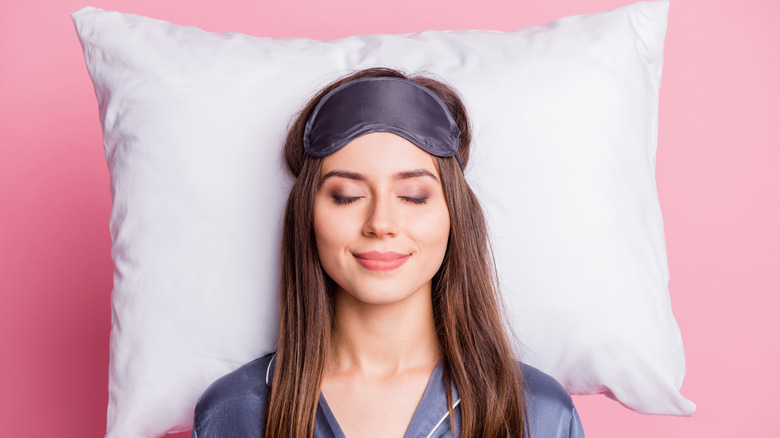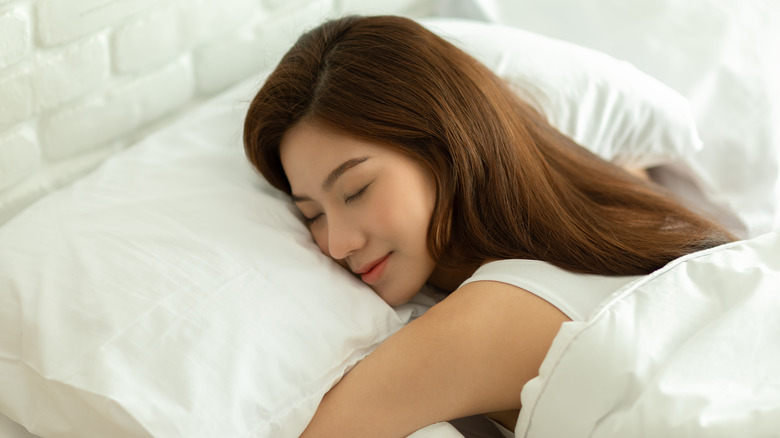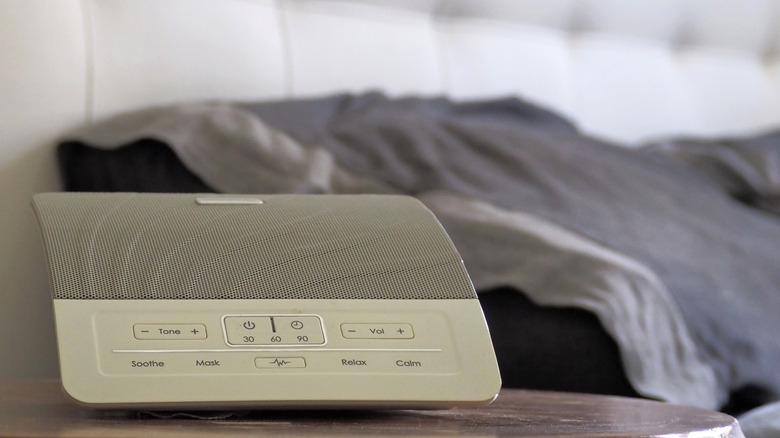What Is Brown Noise And Will It Help You Sleep Better?
You may have heard of white noise. Sleep Foundation defines this popular color noise as "a noise that contains all frequencies across the spectrum of audible sound in equal measure." The result is a static-like sharp sound. Many people listen to white noise when they need to relax, and sometimes, to help them sleep. Another color noise known as pink noise similarly contains all frequencies across the spectrum of sound, but as Healthline points out, the energy "isn't equally distributed across them." Thus, it creates a lower sound than white noise, offering a soft humming background effect.
Now, brown noise is entering the wellness conversation. Much like the other color noises, brown noise offers a static-like flow of sound. However, brown noise produces a deeper "bass-like tone" where the sound level decreases as the frequency goes up. It is a lower sound than white or pink, and WebMD describes it as sounding similar to "heavy rainfall."
With over 76.2 million views on the search for brown noise on TikTok, the topic of this sound has gone viral with claims that it helps you relax, focus, and even get better sleep.
What does brown noise do?
The big question is whether brown noise helps with sleep or not. While many people have claimed and even benefitted from brown noise for sleep, there isn't actually much research to show a connection between better sleep and brown noise. Professor of neurology and director of the U.C.L.A. Sleep Disorders Center Alon Avidan M.D., M.P.H. tells Shape that broadband noises were not shown to be effective. "If patients ask me whether they should purchase a machine that cancels out environmental noise or plays noise, I tell them not to do that," he explains. "The data so far does not show that it has scientific merit."
Clinical assistant professor of psychology at N.Y.U. Langone Health Thea Gallagher Psy.D. tells Shape that brown noise can help slow the mind down for better focus: "There isn't high-level scientific research on this, but [listening to brown noise] does seem to be a way to slow the brain down."
On the other hand, behavioral sleep medicine specialist Sarah Silverman explains to Outside that she has discovered that the best sound for sleep aid would be pink noise, followed by brown noise, and then white noise. Brown noise is, however, proven to help with concentration and relaxation with its deeper tones. Often, people will use brown noise when working to drown out distracting outside sounds. Silverman reveals to Outside that this isn't ideal for falling asleep because it focuses on getting you in a concentrated state of mind.
How to use color noise for sleep
If you're still looking to get better sleep from color noise, a 1993 study published by Industrial Health shows that pink noise can help you fall asleep faster when played at 60 decibels. Additionally, pink noise has also proven to help improve the overall quality of sleep. In a 2020 study published in Nature and Science of Sleep, researchers found that playing small bursts of pink noise in strategic intervals throughout the night enhanced a deep sleep. Getting a deeper, quality sleep has been shown to support the immune system and decrease stress hormones. Other benefits of pink noise include positive effects on motivation, focus, and brain fog, per Suruchi Chandra M.D. Pink noise may also help improve memory.
Many sound machines and sound apps offer all three color noises with the goal to block, or cover up, outside noises. With these machines, you have the option to set a timer so it doesn't play all night if you don't want it to. You can also find videos on YouTube or soundtracks on streaming apps like Spotify to play color noises, or other relaxing sounds (via Sleep Foundation).


